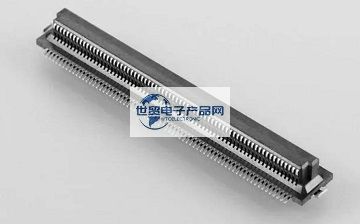Categorization:Product Information
Floating connector is a special type of connector. Its main feature is that it has a certain floating function, which can adapt to the slight error between connectors in the vertical and horizontal directions, and ensure the stability and reliability between connectors. The types, functions, features, and electrical performance parameters of floating connectors are described below. 1. Main types There are two main types of floating connectors: ball floating connectors and clamp floating connectors. The ball head type floating connector realizes the floating function through a ball head and a ball seat, and is mainly applied to the fields of high-speed mobile equipment, mechanical arms, and the like; and the clamp type floating connector realizes the floating function through a clamp and a spring, and is mainly applied to the fields of vibration environments, electronic equipment, and the like. 2. Functional features The main functional features of the floating connector are as follows: (1) Good floating performance: The floating connector can adapt to the slight error between the connectors in the vertical and horizontal directions, and ensure the stability and reliability between the connectors. And (2) the installation is convenient: the installation of the floating connector is very convenient, too many tools and fixing pieces are not needed, and the installation efficiency of the connector can be greatly improved. (3) High reliability: The floating connector adopts excellent material and structural design, and has high reliability and durability. And (4) strong applicability: the floating connector can be applied to various occasions and is suitable for different types of equipment and machines. 3. Electrical performance parameters The electrical performance parameters of floating connectors mainly include the following aspects: (1) Rated current: refers to the maximum current value that the connector can withstand, usually in amperes (A). (2) Rated voltage: refers to the maximum voltage that the connector can withstand, usually in volts (V). (3) Contact resistance: refers to the resistance of the contact point of the connector, usually measured in ohms (Ω). (4) Insulation resistance: refers to the insulation resistance between different interfaces of the connector, usually measured in megaohms (MΩ). (5) Withstand voltage strength: refers to the maximum working voltage that the connector can withstand, usually in kilovolts (KV).

---------------------------------------------------------------------------------------------------
About the World Trade Electronic Products Network Platform related brief introduction and sales product brief introduction: World Trade Electronic Products Network-professional agent/production/sales of various { connector | wiring harness | cable products }; If you have relevant [connector | harness | cable products] procurement/purchase needs or want to buy/know what connector | harness | cable products solutions we can provide, please contact our business personnel below; if you have relevant [connector | harness | cable products] sales/resources and promotion needs, please click "Business Cooperation ←" to negotiate with the specialist!